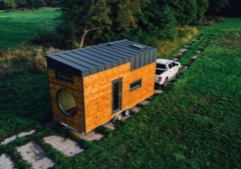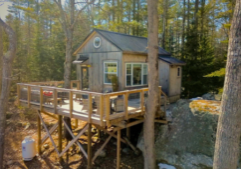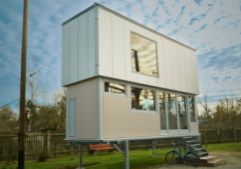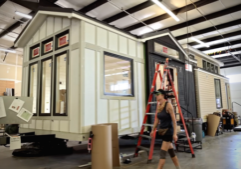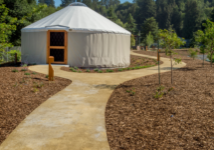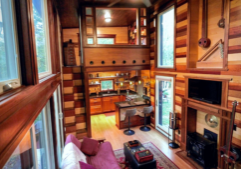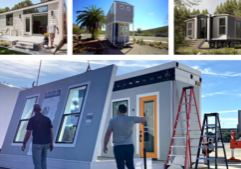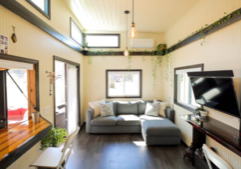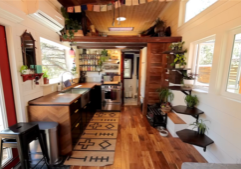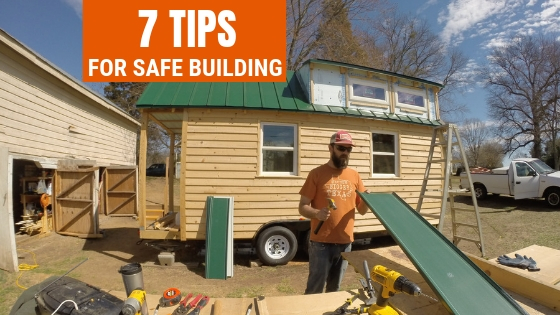
7 Safety Tips for Your Next Tiny Home Remodel or Build
Whether you're DIYing your next tiny home remodel or letting a professional handle it, safety should always be your number one concern!
A recent survey found that just over 50% of North Americans would be willing to try out tiny living.
That's a pretty impressive number, but it also means that now, more than ever, tiny home building safety needs to be addressed.
The last thing you want is an accident darkening your new doorstep. Sometimes, however, in the busyness and excitement of home building or remodeling, we forget to make a foolproof plan that accounts for any possible mishaps. We've come up with this list of tips and tricks to help ease some of that stress!
Whether you're going full DIY or hiring a professional, home and construction safety should be your number one priority.
Read on for 7 easy-to-follow (but super important) tiny home build and remodel tips!
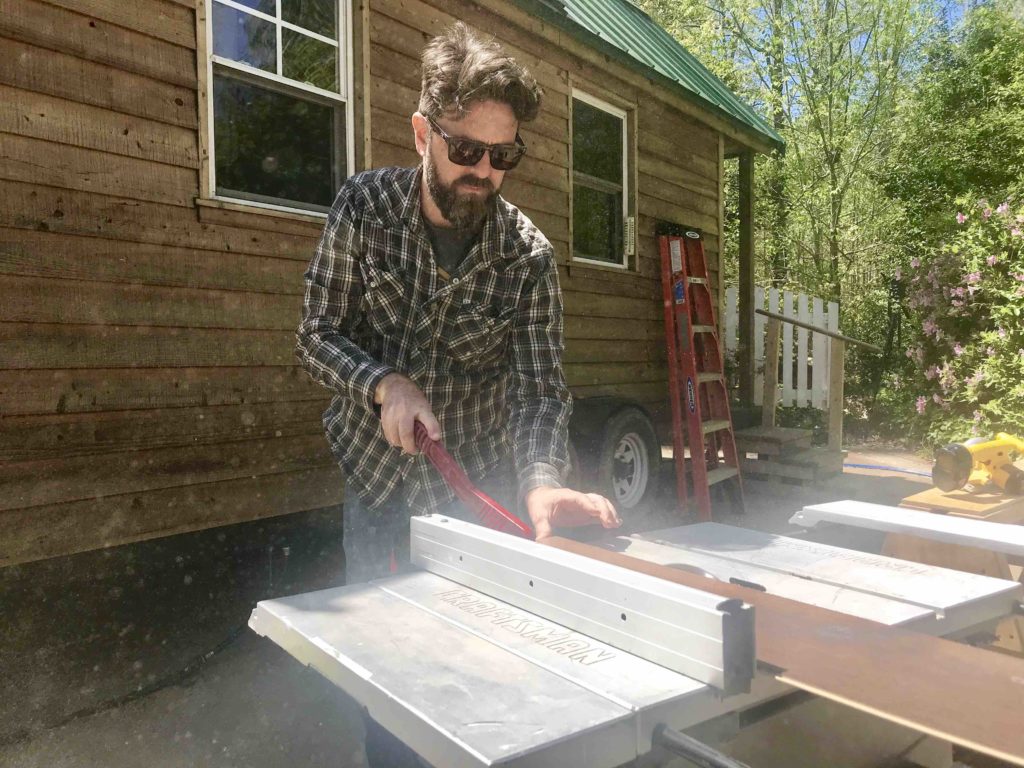
-
Know Your Safety Codes
Each state, county, and city has specific safety codes a building must adhere to. Because the tiny house movement is relatively new, many states haven't figured out how to incorporate them into their code laws. This can be really limiting when you're trying to build a tiny home, especially when there are requirements like a 7-foot ceiling.
Fortunately, this is changing, and more states and municipalities are adopting tiny house building standards like the International Residential Code's Appendix Q.
It can be challenging to find the codes for your city or state. It can be more challenging to figure out how your tiny home fits into these codes. For help on this, contact your local building department for guidance.
Also, contact the Tiny Home Industry Association for navigating confusing code language and for help with other building resources.
Although these codes can be a hindrance when they aren't updated to consider tiny homes, some of them just make good sense. For instance, emergency egress requirements are all about safety, like having a certain number of entrances in case of a fire. Either way, failing to meet code while building or remodeling can result in the loss of your building permits, specifically for site-built tiny houses.
Staying up-to-date on building codes may not seem like an issue for simple remodels. That's not always the case.
For example, you may want to remodel your tiny home to incorporate solar energy and other non-traditional and less harmful utilities. Before embarking on a total switch, make sure your city doesn't require living spaces to be connected to certain utilities. (After all, being connected doesn't mean you have to use them.)
Knowing your code is a significant first step. It will prevent you from making or following through with plans that will get you into trouble, especially if you are striving to live tiny legally.
-
Plan in Advance of Your Home Remodel and Know Your Risks
So you've checked out your code, you know exactly what you want from this tiny home remodel, and you're eager to get to work.
Pause. Have you considered all of the steps required to remodel your tiny home into your dream home?
One of the easiest ways for unnecessary accidents to occur on a building site is to figure out what you're doing as you go. Don't decide that you want solar panels, order them, and then sit on your roof Googling installation tips on your phone. Though, we've been there before.
If you know what equipment is needed, what kind of workers, if any, you need to hire, and what steps to take to complete the job, you can perform a job safety analysis.
The benefit of job safety analysis? Knowing in advance what kind of hazards might lie ahead, giving you the foresight to minimize all risk factors.
The best way to prevent an accident is to see it from a mile away. That, and to have the right gear from the start.
-
Use Quality Tools and Take Care of Them
Even if you're not doing a huge remodel and it won't take a ton of time, you should consider the necessary tools a real investment. Don't skimp on quality to save a couple of bucks.
Most of the time, you're going to want tools made from steel. Steel tools are durable, heat resistant, and easy to clean and sharpen.
Cleaning or sharpening your tools regularly is a great way to keep them in like-new condition. Using a dull blade can not only slow you down but can also lead to entirely avoidable injuries. Plus, an injury caused by a dull blade can be significantly worse than an injury caused by a clean, sharp blade.
Safety becomes an even more significant concern when using power tools. Do your research to find safe power tools on the market, and make sure that you're exercising precaution when power tools are in use.
There are a few easy-to-follow rules when it comes to power tools.
Never carry a power tool by its cord or unplug a tool by pulling at the cord from a distance. Keep power tools unplugged and safely stored when they aren't in use. Try to carry power tools in buckets or toolboxes, especially if they're sharp or you need to bring them up a ladder.
Most importantly, never rush when using power tools. Rushing can lead to major yet easily avoidable accidents.
Remember how much money you're saving by opting for the tiny home lifestyle! Use some of those savings to ensure that you're tiny home build or remodel goes as smoothly as possible.
-
Keep Your Work Space Clean and Ventilated
This may seem like a no-brainer, but anyone who has gotten caught up in the chaos of a home remodel will tell you that it's easy to forgo the clean-as-you-go rule.
In a tiny home, a small amount of clutter can become a monster of a mess. As a tiny homeowner, you're extremely organized on a day to day basis, right? Apply that same dedication to cleanliness and order during your home remodel.
That being said, cleanliness isn't just about clutter. If you're moving around furniture, painting, ripping up flooring and siding, doing anything that really stirs up the air or creates strong fumes, extra steps need to be taken to ensure home safety.
Is your remodel raising a lot of dust or particles? Keep any windows and doors wide open to create airflow, but also try to wipe down surfaces where extra debris can (and will) collect.
Things like fumes and dust may not cause immediate accidents, but if you aren't careful, they could lead to issues down the road. At the very least, those kinds of irritants will make breathing more difficult, and that's never ideal!
-
Wear the Right Protective Gear
This one goes for tiny homeowners that aren't actively participating in the build just as much as the DIY-ers. If you're on-site, you need to make sure you're construction safety-ready.
Depending on the kind of work you're doing, this doesn't have to mean hardhats. If your remodel is mostly a major repainting project, for example, you should be alright without head protection, but you should wear something to cover your nose and mouth.
Protective gear is most important if you need to use large tools, wooden boards or metal sheets, or anything that can fall, pinch, or cut. Even splinters, while not life-threatening, are annoying and avoidable with the right pair of gloves!
If you find that specific protective gear is recommended when doing the kind of renovating you're planning on doing, just get it! There is no downside to wearing protective gear, but there can be some pretty nasty downsides if you don't.
Just a quick reminder: it's not just about what you do wear. Construction safety also comes down to what you don't wear.
You may rock open-toed shoes, flowing shirts, or dangling jewelry regularly, but that kind of stuff has no place on a construction site. Solid, sturdy shoes and well-fitted clothing that can't catch in or on anything are musts in home remodeling.
-
Have a Good First Aid Kit Onsite
Of course, we hope that you won't have any accidents during your home build if you follow the steps we've laid out. We can't predict the future, though, and it's essential to be prepared for minor injuries.
You can usually find pre-assembled first aid kits at drugstores and grocery stores, but it's easy enough to assemble one on your own.
Of course, no one expects you to play doctor in the event of a severe injury (unless you happen to be one).
A scrape? A cut that doesn't require a tetanus shot? A nasty splinter? These are all treatable with a good first aid kit.
-
Try to Keep Regular Safety Equipment Up and Running
Just like any home, tiny homes should always be equipped with safety gear like smoke detectors and fire extinguishers. Ideally, because tiny houses can be very enclosed spaces, you will also have an exhaust fan or two that will keep the fresh air circulating.
Depending on the nature of your build, you may have to disconnect your electricity for a while. Keep that as limited as possible, even if you're sleeping somewhere else for the duration of the remodel.
This is especially important if your build or remodel requires the use of heating equipment or tools like soldering irons. Statistically, this kind of equipment accounts for 25% of the fires that have occurred during renovation.
Don't let your remodeling project, and your entire home, go up in flames! With the right equipment, tiny home fires are much more preventable.
Let's Get Building
Hopefully, these seven tips have left you feeling more prepared than ever to create your dream tiny home, safely!
Whether you're going through your build or home remodel alone or with hired help, make sure that safety is always your number-one concern.
Check out the rest of our blog for tiny home inspiration and tips!

